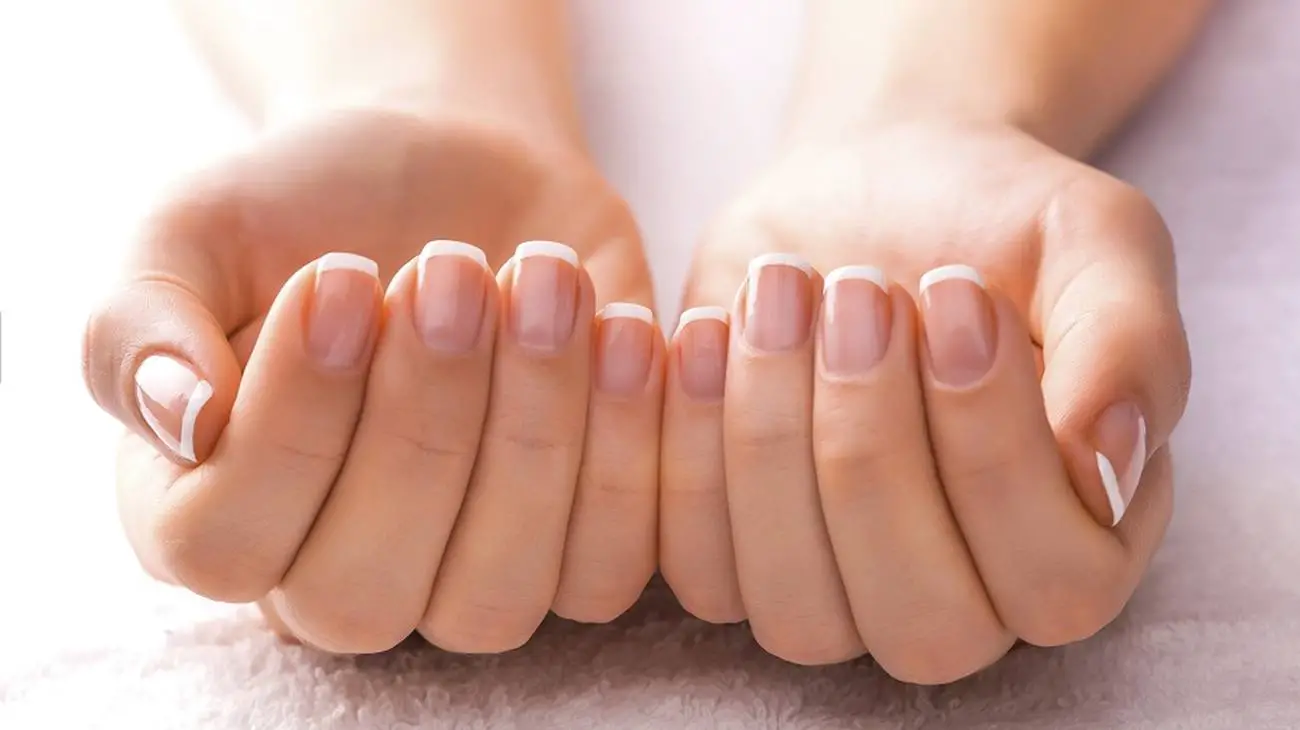The nail, an appendage of the skin, is a horny, translucent plate that protects the tips of the fingers and toes.
Onyx is the technical term for the nails. The condition of the nail, like that of the skin, reflects the general health of the body.

Nail Care – most common nail problems
Beau’s lines
These are the lines running on the nail front face. They are characterized by grooves on the nails and unilateral lines.
Beau’s lines Definition and Effects – Why are Beau’s lines important?
Beau’s lines progress distally with normal nail growth and eventually disappear at the free edge.
Beau’s lines disorder may be caused by trauma, illness, malnutrition or any major metabolic condition, chemotherapy or other damaging event, and is the result of any interruption in the protein formation of the nail plate.
Causes of Beau’s lines
Unusual cases of Beau’s Lines are associated with transverse grooves on the nails of one extremity and unilateral lines presented after a metaphysical fracture of the distal radius and wrist immobilization.
Treatment and remedies for Beau’s lines
Beau’s lines may be also a sign of malnutrition, zinc or iron deficiency, anemia, any major metabolic condition or a not lasting condition when growth at the area under the cuticle is interrupted by an injury or after a stressful event that temporarily interrupted nail formation.
The lines progress distally with normal nail growth and eventually disappear at the free edge.
Ingrown toenails
Synonym of ingrowing nails – Onychocryptosis
Ingrown nails are the nails grow into the nail wall piercing the skin. The infection affects the toes more than the fingers. An ingrown, toenail generally occurs when part of the nail penetrates the skin and it.
Often results in an infection. The ingrown nail can also apply pressure in the nail fold. Also known as toe infection, nail infection, ingrown nail or onychocryptosis, the ingrown toenails are one of the most common foot problems treated by a chiropodist and podiatrist.
Causes of ingrown toenails
The most common cause of ingrown toenails is cutting then incorrectly therefore causing then to regrow into the skin.
Tight hosiery or shoes with narrow toe boxes just worsens the condition. If the skin is red, painful or swollen on the sides of the nail, on infection may be present.
Treatment and prevention of ingrown toenails
Cut toenails straight across, and leave slightly longer then the end of the toe. Injury to the nail bed may produce a permanent deformity. Do not pick at your cuticles or bite the nails, or habits that damage the nail bed.
Diabetics and those with poor circulation to the feet must never attempt to treat an ingrown toenail at home, consult with a podiatrist or physician immediately.
Usually the side of the nail penetrates deep and it is difficult to see the edge of the nail. The severity of appearance of the nail will vary. Some will just have a nail that appears deeply embedded down the side or sides of the nail.
In some the corner or a small spike of nail may penetrate the skin, just like a knife. Wash the foot including the affected area twice a day with soap and water. Keep the foot clean and dry during the rest of the day.
Koilonychia
Causes, Symptoms and Treatment of Koilonychia of Nail
Koilonychia is a common deformity in which the nail plate, which normally has a convex contour, is replaced by a concave contour. Koilonychia may be inherited as an autosomal dominant trait or it may be associated with other syndromes. Injury to the nail bed may produce a permanent deformity.
Koilonychia is a well-recognized clinical sign of iron deficiency occurring either with or without anemia. For nail abnormalities due to ingrown toenails, wear shoes that don’t squeeze the toes together, and always cut the nails straight across along the top.
Causes of Koilonychia
Other common causes of Koilonychia include pica, illness, cheilosis, glossitis, chemotherapy, malnutrition, iron deficiency or any major metabolic condition or damaging event.
One iron tablet a day is sufficient but depending how severe is the Koilonychia occasionally two tablets will be needed but larger doses are not recommended. Chronic exposure to moisture or to nail polish can produce brittle nails with peeling of the edge of the nail.
Since the Koilonychia is associated with iron deficiency it is important to take care of your nutrition to fight not only against spoon nails but also with the fatigue, mood changes and decreased cognitive proper function of this condition.
Treatment of Koilonychia
Since Koilonychia is caused due to malnutrition, therefore it is very important to take care of your nutrition habits and diets. As it occurs mainly due to iron deficiency, so you must eat food containing more iron content in them.
For brittle nails, keep the nails short and avoid nail polish. Use an emollient (skin softening) cream after washing or bathing.
Nail Care Tips
Nails are produced by living skin cells in the fingers and toes. They are composed primarily of keratin, a hardened protein also found in skin and hair.
A normal healthy nail is firm and flexible and appears to be slightly pink in color. Its surface is smooth, curved and unspotted, without any hollows or wavy ridges.

Remember the following tips:
- Keep nails clean and dry.
- Keep your toenails cut short.
- Nails should be cut straight across and rounded slightly at the tip for maximum strength.
- Use sharp nail scissors or clippers. Filing the nails into points will weaken them.
- Avoid biting fingernails, and do not remove your cuticle.
- Avoid walking barefoot at public showers and swimming facilities.
- Avoid “digging-out” ingrown toenails, especially if they are already infected and sore.
- Seek treatment from a dermatologist.
- Make sure your shoes fit properly.
- Report any nail irregularities to your dermatologist. Nail changes, swelling, and pain could signal a serious problem.
- To keep your nails strong dial the telephone no. with the help of pen or pencil.
- For gorgeous and beautiful nails wear gloves when you are doing housewok, gardening to prevent it from nicks cuts and drying elements.
- To avoid encouraging nails to grow into surrounding tissue of your toenails keep shape of toenails square.
- Change your nail-varnish at least once in a week. For next day use fresh nail-varnish.
- To apply nail polish neatly first dip the brush into bottle and then to remove extra nail polish press it slightly against the edge of the bottle’s mouth.
- To avoid nail problems do not wear toe-pinching shoes because cramming toes into tight shoes may lead nail problem.
- Nail massage helps to improve your blood flow to the fingers and toes. It also helps to make nails strong and flexible.
- For healthy and strong nails eat healthy foods, because it show direct effect on nails.
- To soften your skin and to make your cuticles easier to manipulate, rub a cuticle oil or cream around your nails before you manicure.
- During each coat of polish leave enough time for your nail varnish to dry so that you can get a silky, smooth finish.
Signs and Symptoms of nail disorders
Nail disorders comprise about 10 percent of all skin conditions. Nail disorders are accompanied by the following signs and symptoms.
- Discoloration or spotting
- Painful, red swelling
- Pits, ridges, scars
- Lesions
- Brown-black band
- Treatment of nail disorders or diseases
Without treatment, condition often spreads to multiple toenails and can form a portal for recurrent bacterial infections. Common in diabetics and can contribute to foot problems.
Surgical treatment is common to remove tumors or correct structural abnormalities. Non-surgical treatments include the use of topical or oral medications.
Nail technicians are trained to beautify the hands/feet and are not allowed to diagnose nail diseases or to treat them in the salon. For your nail health, seek the diagnosis and recommendation of a knowledgeable dermatologist.
Herbal home remedies for curing nail infections
Herbal remedies may offer relief from symptoms. Herbs are generally available as dried extracts (pills, capsules, or tablets), teas, or tinctures (alcohol extraction, unless otherwise noted).









































